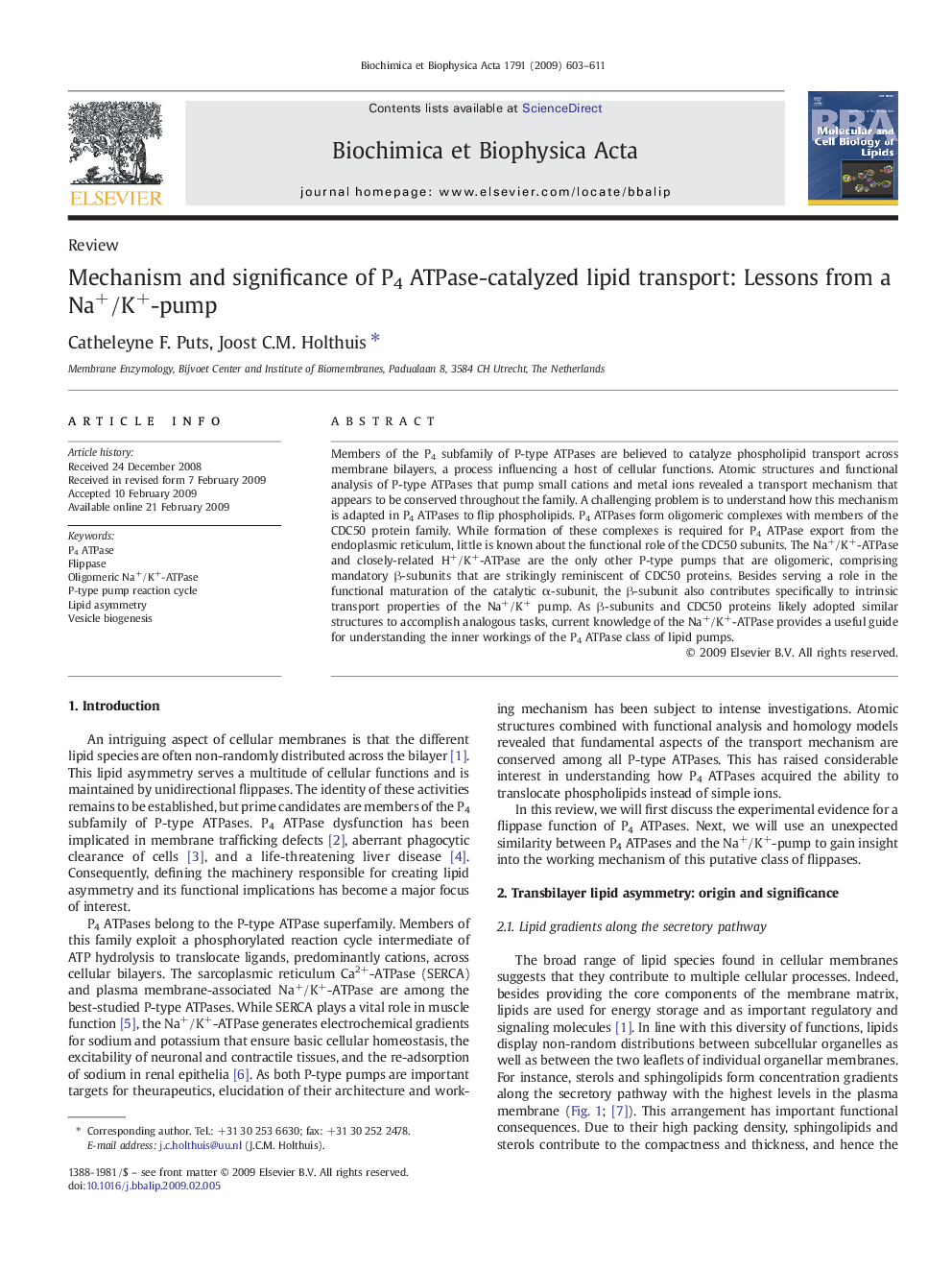| کد مقاله | کد نشریه | سال انتشار | مقاله انگلیسی | نسخه تمام متن |
|---|---|---|---|---|
| 1949908 | 1537787 | 2009 | 9 صفحه PDF | دانلود رایگان |

Members of the P4 subfamily of P-type ATPases are believed to catalyze phospholipid transport across membrane bilayers, a process influencing a host of cellular functions. Atomic structures and functional analysis of P-type ATPases that pump small cations and metal ions revealed a transport mechanism that appears to be conserved throughout the family. A challenging problem is to understand how this mechanism is adapted in P4 ATPases to flip phospholipids. P4 ATPases form oligomeric complexes with members of the CDC50 protein family. While formation of these complexes is required for P4 ATPase export from the endoplasmic reticulum, little is known about the functional role of the CDC50 subunits. The Na+/K+-ATPase and closely-related H+/K+-ATPase are the only other P-type pumps that are oligomeric, comprising mandatory β-subunits that are strikingly reminiscent of CDC50 proteins. Besides serving a role in the functional maturation of the catalytic α-subunit, the β-subunit also contributes specifically to intrinsic transport properties of the Na+/K+ pump. As β-subunits and CDC50 proteins likely adopted similar structures to accomplish analogous tasks, current knowledge of the Na+/K+-ATPase provides a useful guide for understanding the inner workings of the P4 ATPase class of lipid pumps.
Journal: Biochimica et Biophysica Acta (BBA) - Molecular and Cell Biology of Lipids - Volume 1791, Issue 7, July 2009, Pages 603–611